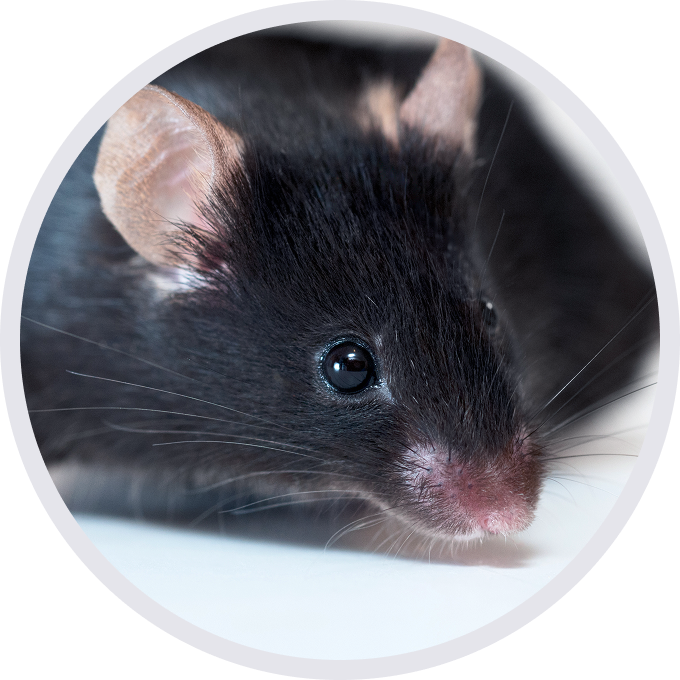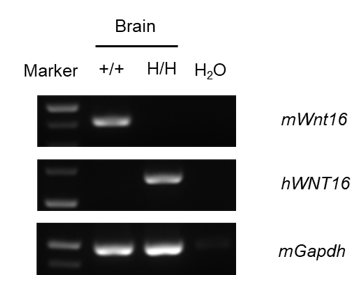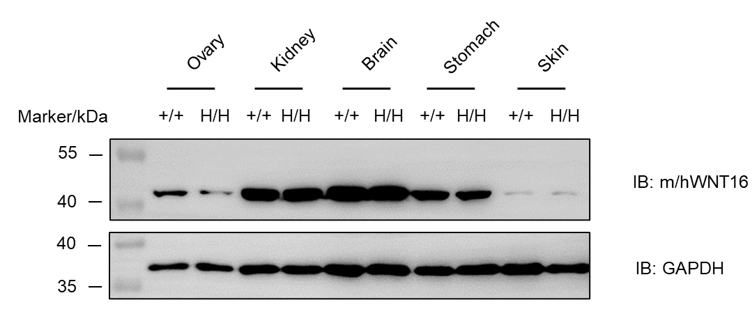Description
- Wnt‑16 is a 40 kDa protein belonging to the Wnt family of secreted, highly conserved, cysteine‑rich, palmitoylated cell signaling glycoproteins that play important roles in vertebrate developmental pattern formation, cell fate decision, axon guidance, and tumor formation. Wnt‑16a and Wnt‑16b isoforms in humans differ in their signal sequences and the first two amino acids (aa) of the mature protein.
- Wnt‑16b is the more conserved isoform and is widely expressed, while Wnt‑16a is expressed mainly in the human pancreas. Mature human Wnt‑16b shares 92%, 93%, and 95% aa sequence identity with mouse/rat, rabbit/porcine/equine, and bovine Wnt‑16, respectively. Wnt‑16 expression is detected in uterine stroma adjacent to the luminal epithelium during implantation. It is upregulated during the first embryonic lymphoid progenitor differentiation. Congenital heart defects correlate with elevated levels of Wnt‑16 in mouse embryos and human amniotic fluid. Low cortical bone thickness and bone mineral density correlate with deletion of Wnt‑16 in mice and a Wnt‑16 missense SNP in humans.
- Wnt‑16 is overexpressed in cells undergoing replicative senescence and is up‑regulated in articular cartilage due to injury and osteoarthritis. Wnt‑16b expression in the skin is up‑regulated in human basal cell carcinomas, enhancing cell survival. Its expression is also upregulated by DNA damage (radiation and chemotherapy) in the stroma surrounding prostate tumors, resulting in enhanced survival and treatment resistance in the tumor cells.
mRNA expression analysis
Strain specific analysis of WNT16 mRNA expression in wild-type C57BL/6 mice and B-hWNT16 mice by RT-PCR. Brain RNA were isolated from wild-type C57BL/6 mice (+/+) and homozygous B-hWNT16 mice (H/H), then cDNA libraries were synthesized by reverse transcription, followed by PCR with mouse or human WNT16 primers. Mouse Wnt16 mRNA was detectable in wild-type C57BL/6 mice and homozygous B-hWNT16 mice. Human WNT16 mRNA was detectable only in homozygous B-hWNT16 mice but not in wild-type mice.
Protein expression analysis
Western blot analysis of WNT16 protein expression in homozygous B-hWNT16 mice. Various tissue lysates were collected from wild-type C57BL/6 mice (+/+) and homozygous B-hWNT16 mice (H/H), and then analyzed by western blot with anti-WNT16 antibody (Abcam, ab109437). 40 μg total proteins were loaded for western blotting analysis. WNT16 was detected in ovary, kidney, brain, stomach and skin in wild-type mice and homozygous B-hWNT16 mice, as the antibody is cross-recognize both human and mouse WNT16.
* When publishing results obtained using this animal model, please acknowledge the source as follows: The animal model [B-hWNT16 mice] (Cat# 111010) was purchased from Biocytogen.


